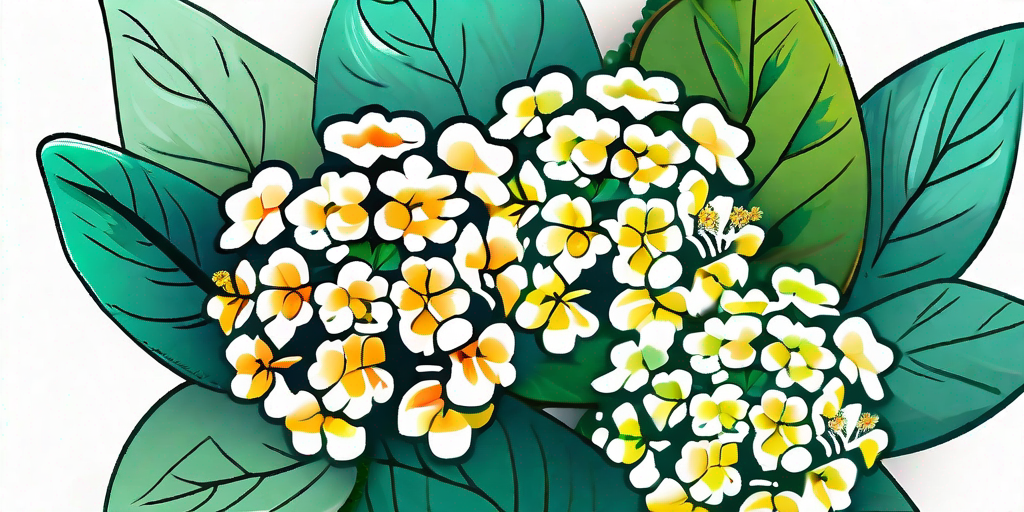
Ah, the lantana. A plant that's as vibrant and vivacious as a Mardi Gras parade, but can turn into a botanical version of a bad hair day if not properly maintained. Fear not, green-thumbed friends, for we are here to guide you through the labyrinth of lantana care, specifically focusing on the art of trimming. So, grab your gardening gloves, your trusty shears, and let's dive into the world of lantana landscaping.
Understanding Your Lantana: It's Not Rocket Science, It's Botany!
What is a Lantana?
Before we dive into the nitty-gritty of lantana trimming, let's take a moment to appreciate this botanical beauty. The lantana is a genus of about 150 species of perennial flowering plants in the verbena family. They are native to tropical regions of the Americas and Africa but have been introduced to almost every region on Earth. They're the botanical equivalent of a world traveler, minus the annoying Instagram posts.
Lantanas are known for their vibrant, multi-colored flowers that bloom from spring to fall. They're like the fireworks of the plant world, but without the noise and fire hazard. Plus, they're a hit with butterflies and hummingbirds, so they're perfect if you're trying to make your garden a hotspot for local wildlife.
The Importance of Trimming
Now, you might be wondering, "Why do I need to trim my lantana? It's not like it's going to get split ends." Well, while your lantana might not need a trim for the same reasons you do, regular pruning is crucial for keeping your plant healthy and happy.
Trimming helps to promote growth, maintain shape, and prevent diseases. It's like a spa day for your lantana, but instead of a facial and a massage, it gets a good old-fashioned haircut. And just like how you wouldn't trust just anyone with your hair, you shouldn't trust just anyone with your lantana. That's why we're here to guide you through the process.
How to Trim Your Lantana: A Step-by-Step Guide
Step 1: Gather Your Tools
Before you start, you'll need a few tools. These include a pair of sharp pruning shears, gardening gloves (lantanas can be a bit prickly), and a compost bin or bag for the trimmings. It's like preparing for a surgery, but with less stress and no medical degree required.
Make sure your shears are sharp and clean. Dull or dirty tools can damage your plant and spread diseases. So, keep them in tip-top shape. It's like the old saying goes, "A gardener is only as good as their tools."
Step 2: Identify What Needs to Be Trimmed
Next, you'll need to identify which parts of your lantana need a trim. Look for dead or dying branches, branches that are growing in unwanted directions, and any areas where the plant is becoming too dense. These are the areas that need your attention. It's like playing a game of 'spot the difference', but with plants.
Remember, the goal is to promote growth, maintain shape, and prevent diseases. So, don't be afraid to be a little ruthless. Your lantana will thank you for it in the long run.
Step 3: Make the Cut
Now, it's time to make the cut. Hold the branch you're trimming with one hand and cut with the other. Make your cuts at a 45-degree angle, about 1/4 inch above a leaf node or branch junction. This will promote new growth and help prevent diseases.
Be sure to make clean, sharp cuts. Ragged or torn branches can lead to disease and pest problems. It's like giving your lantana a clean shave, but without the shaving cream and razor burn.
Aftercare: Keeping Your Lantana Happy Post-Trim
Watering and Fertilizing
After trimming your lantana, give it a good watering and apply a slow-release fertilizer. This will help your plant recover from the trimming and promote new growth. It's like giving your lantana a nice, refreshing drink after a hard workout.
Remember, lantanas are drought-tolerant, so don't overwater. Too much water can lead to root rot and other problems. So, keep it hydrated, but don't drown it.
Monitoring for Pests and Diseases
Keep an eye on your lantana after trimming for signs of pests or diseases. Common issues include aphids, whiteflies, and powdery mildew. If you notice any of these, treat them immediately to prevent them from spreading.
Remember, prevention is better than cure. So, keep a close eye on your lantana and act at the first sign of trouble. It's like being a plant detective, but without the trench coat and magnifying glass.
Frequently Asked Questions
When is the best time to trim my lantana?
The best time to trim your lantana is in the late winter or early spring, before new growth begins. However, you can do light trimming throughout the growing season to maintain shape and promote blooming.
How often should I trim my lantana?
How often you trim your lantana depends on the look you're going for. If you prefer a more natural look, you might only need to trim once a year. If you prefer a more manicured look, you might need to trim more frequently.
Can I trim my lantana back to the ground?
Yes, you can trim your lantana back to the ground in late winter or early spring. This is known as a "hard prune" and can help rejuvenate older plants.
In Conclusion
Trimming your lantana might seem like a daunting task, but with the right tools and a little know-how, you can keep your plant looking lush and lovely. So, don't be afraid to get out there and give your lantana a trim. Your plant (and your neighbors) will thank you.
Remember, gardening is not just about maintaining plants, it's about nurturing a living, breathing piece of nature. So, treat your lantana with the care and respect it deserves, and it will reward you with a vibrant display of color and life.















